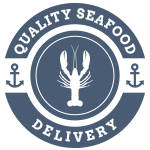Canned and smoked pink salmon is very popular commercially in part because of the large available supply. If you’re shopping for canned salmon and all the label says is “wild” salmon, then it’s probably pink. Nevertheless, there’s a big difference in quality and nutritional value between wild pink salmon and farm-raised Atlantic salmon. If you’re looking for an affordable, convenient, and nutritious way to eat salmon on a regular basis, pink salmon is an indispensable resource.
While best practices for smoking and canning should deliver a nutritious and high-quality result regardless of the salmon type, the longer freezing period and shelf-stable quality of pink salmon is also a natural choice for smoking and canning salmon. Nevertheless, it’s always a good idea to look for companies with a reputation and track record for best practices and accurate labeling.
More Reasons for Choosing Pink Salmon
While canned and smoked pink salmon is preferred among commercial producers for the available supply and price, there are also reasons why pinks are popular among people who use smoke and canned salmon for subsistence through the winter. The harvesting season is relatively late for pink salmon. While July and August are best for ocean harvesting, it’s the late summer and beginning of fall that’s best for catching pink salmon in rivers. Like any type of salmon, canned pink salmon is a great source of protein that will remain shelf-stable for several years.
Especially in Alaska, there’s another reason why many use their supply of pink salmon for smoking and canning at the end of the year. Whether its king, sockeye, or coho, these salmon are more popular for cooking salmon fillets. Thus, along with their late harvesting season, pink salmon is what’s left when it comes time to prepare for winter. Moreover, compared to grilling and baking, there isn’t as much difference in the taste of different types of salmon when smoking and canning. Much of the nutritional value is preserved, however. This makes wild-caught pink salmon a much better choice for smoking and canning than, say, farm-raised Atlantic salmon.
Recipes and Methods
It’s important that you follow the basic rules for smoking and canning wild salmon, or you won’t get the desired result no matter what type of salmon you choose. Still researching the basics of curing, drying, smoking, and basting the fish? Here is a great step-by-step resource for smoking your own salmon. Looking to make your supply of salmon last years instead of months? Here is a basic tutorial we recommend for jarring and canning your own salmon.
What’s more, if you’ve already mastered the basics, you can find recipes specifically created for smoking pink salmon. Here is a useful discussion forum with suggestions for a brine and curing recipe that will serve you well for both smoking and canning your salmon.
Take note of our Affiliate Relationships that may exist with this page and companies listed on it.

